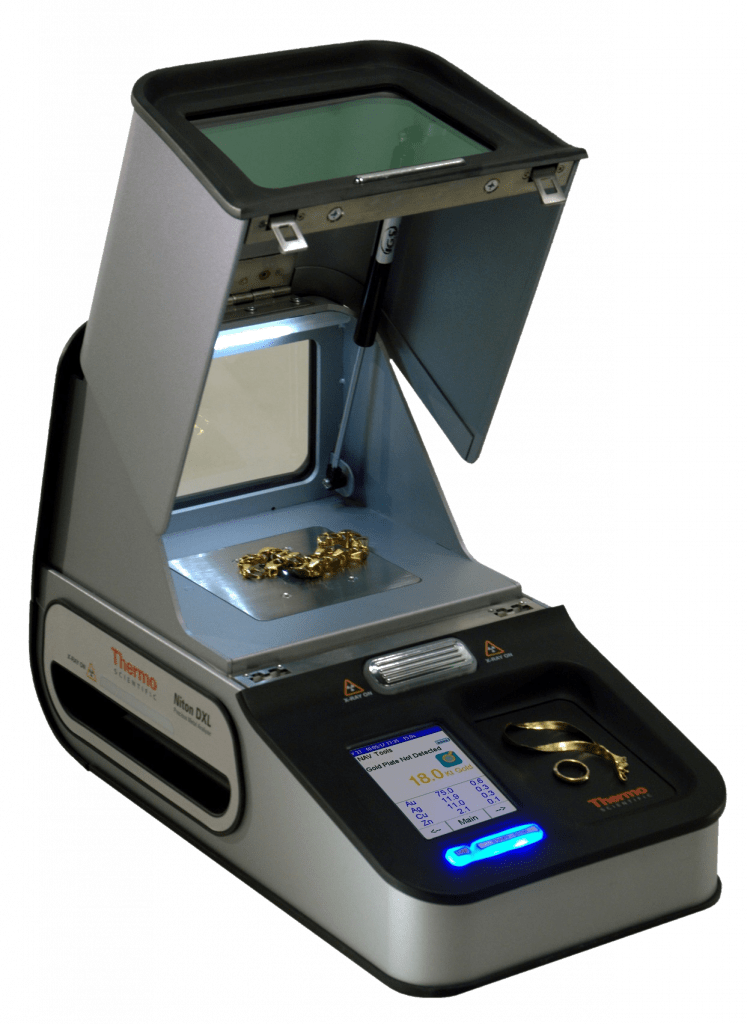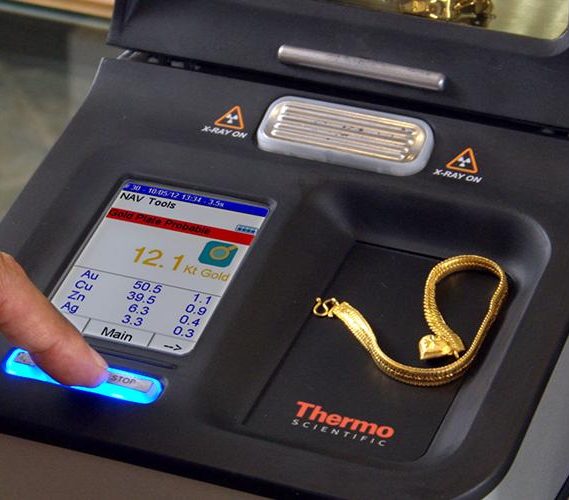X-Ray fluorescence (XRF) gold fineness testing
Comparing X-ray Fluorescence (XRF) gold fineness testing to other methods of assessing gold purity involves considering several factors such as accuracy, non-destructiveness, speed, and cost. Let’s compare XRF with a few common methods:

In summary, XRF is a highly accurate, non-destructive, and fast method for testing gold purity, suitable for a range of items. However, its initial cost can be high. Other methods like fire assay are more accurate for overall purity but are destructive and slower. Acid tests are cheaper and quicker but less precise, while electronic testers provide a good balance between cost, speed, and non-destructiveness. Ultrasonic testing is useful for internal verification but less so for purity assessment. The choice of method depends on the specific requirements of accuracy, cost, speed, and whether the process is non-destructive.
X-ray Fluorescence (XRF):
- Accuracy: High accuracy, especially for surface composition.
- Non-Destructiveness: Non-destructive; does not alter or damage the gold item.
- Speed: Quick analysis, typically within seconds to minutes.
- Cost: Relatively high due to the cost of XRF equipment.
- Use: Suitable for a wide range of items, including jewellery and coins. However, it may not detect in-depth composition if the gold is plated.
Gold Fineness Testing With Fire Assay:
- Accuracy: Extremely high accuracy, considered the gold standard for gold purity testing.
- Non-Destructiveness: Destructive; a sample of the gold must be melted and chemically analysed.
- Speed: Slow, can take several hours to a day.
- Cost: High operational costs due to the need for skilled technicians and a laboratory setting.
- Use: Often used for official certification of gold bars and bullion.
Acid Testing:
- Accuracy: Reasonably accurate for determining if gold is genuine, but less precise for exact purity.
- Non-Destructiveness: Semi-destructive; leaves small stains or scratches.
- Speed: Quick, results are almost immediate.
- Cost: Low-cost and simple, can be done with minimal equipment.
- Use: Commonly used by jewellers for quick verification.
Gold Fineness Testing With Electronic Testers:
- Accuracy: Moderate to high, but can be less reliable than XRF or fire assay.
- Non-Destructiveness: Non-destructive.
- Speed: Fast, provides results within minutes.
- Cost: Varies, generally less expensive than XRF machines.
- Use: Convenient for jewellers and pawn shops for quick testing.
Ultrasonic Testing:
- Accuracy: Good for detecting internal flaws and inconsistencies but less accurate for purity.
- Non-Destructiveness: Non-destructive.
- Speed: Relatively quick.
- Cost: Moderate; requires specialized ultrasonic equipment.
- Use: Useful for detecting internal defects or for verifying solid gold versus plated items.
